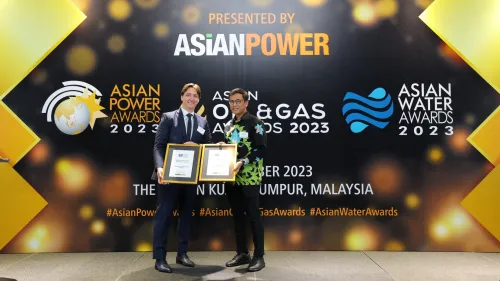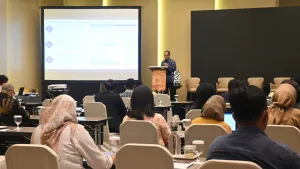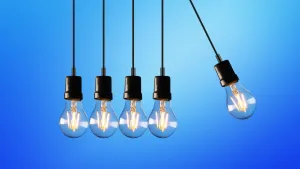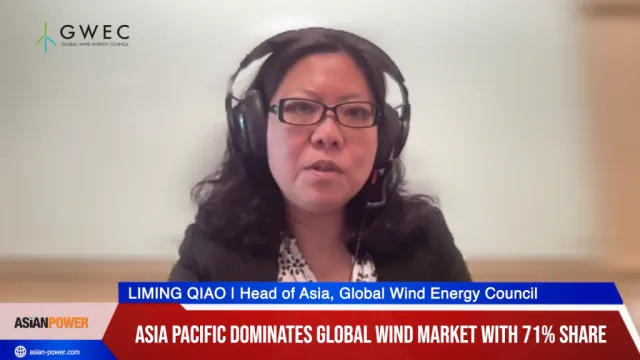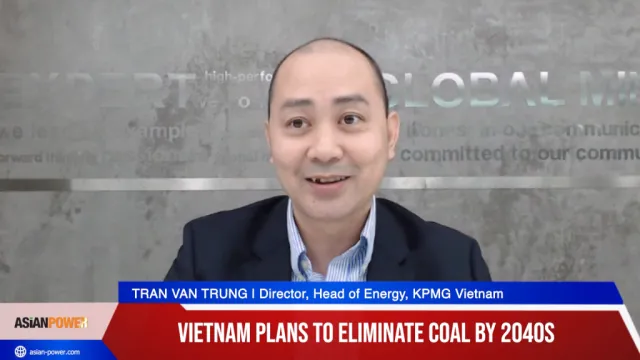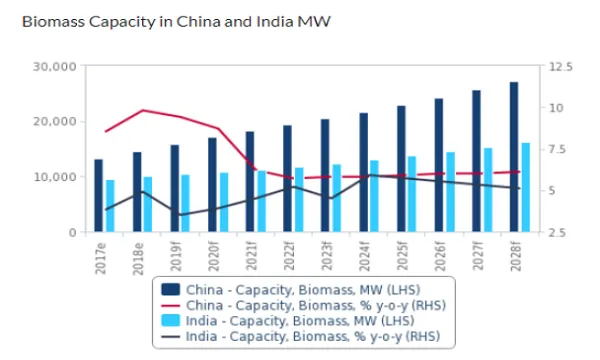
China and India to lead biomass growth by 2028
They are expected to add more than 12.8GW and 6.1GW, respectively.
Asia is expected to lead growth in the biomass sector over the coming decade, driven largely by China and India, thanks to the region’s large agriculture sectors and rapidly expanding power demand which offers significant growth opportunities for biomass generation, a report by Fitch Solutions revealed.
As states will seek to leverage on their agricultural residues, the increasingly supportive regulatory environment and financial incentives for the biomass sector in various states will also aid in growth and development of the segment over the next decade.
Also read: These 5 Asian countries could boost 55% of the world's biomass additions
China is slated to become the fastest-growing biomass market in the world over the coming decade, adding more than 12.8GW between 2018 and 2028.
According to China's Five-Year Plan, the country aims to boost biomass to such an extent that it generates an equivalent heat and electricity output to 58 million tonnes of coal annually by 2020. As part of the country's longer-term biomass capacity expansion plan, the government aims to expand the sector to a total of 30GW by 2030, which is a substantial increase from the 14.5GW installed as of end-2018, Fitch Solutions estimates.
“We believe China will benefit from the vast cross-country potential for biomass feedstock production,” the report’s authors said, highlighting how in the central and north-eastern parts of the country, this will likely be derived from residues left from the food harvest, with straw and stalks being of particular potential. “These can stem from maize, rice, cotton and wheat agriculture, whereas forestry derived biomass feedstock will have greater potential in the southern and central parts of China, where such industry is more prominent,” they noted.
Meanwhile, the Indian biomass sector is expected to expand from 10GW as of 2018, to more than 16.1GW by 2028, as the country will seek to leverage residues from a number of agricultural sectors, particularly from sugar and rice production. It has been estimated that the country as a whole produces close to 550 million tonnes of residue from agriculture, forestry and plantations on an annual basis, which could generate over 16GW of power.
Also read: India sets generic tariffs for renewables
The Indian National Energy Policy 2040 document highlights biomass power as a key component of India's power sector expansion, which includes using biomass as a baseload source of electricity to balance a rapidly increasing supply of intermittent wind and solar power. The report also noted how in late 2018, the government also announced a new scheme to support biomass and bagasse cogeneration in sugar mills, including financial incentives and subsidies.
“We believe that biomass/coal co-firing holds particular promise, given the state's high reliance on coal generation amid the increasing concerns about climate change and pollution. This is supported by the largest stated-owned utility National Thermal Power Corporation (NTPC)’s recent announcement to blend crop residues with the coal it incinerates for power generation in all its coal-based plants,” Fitch Solutions said.
As India also faces severe pollution pressures from the burning of agriculture residue, which creates smog when burnt directly following harvest, the Indian government is also forecasted to take firmer steps to leverage upon such waste for power generation.


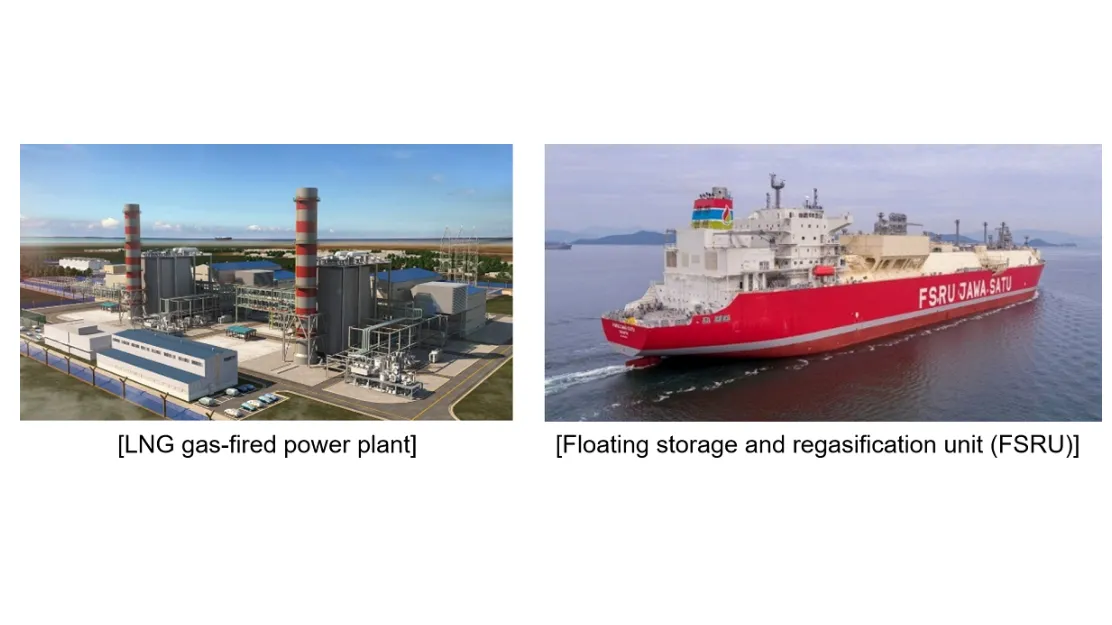
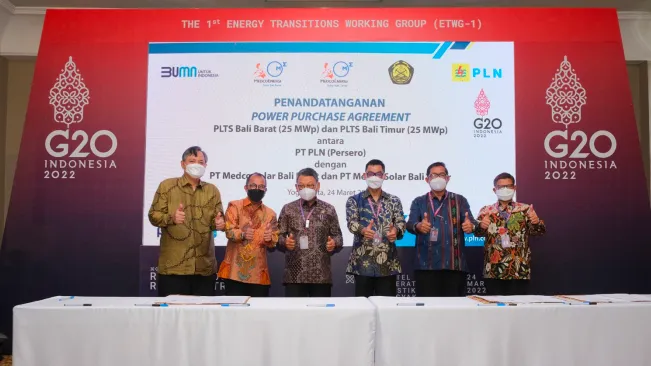





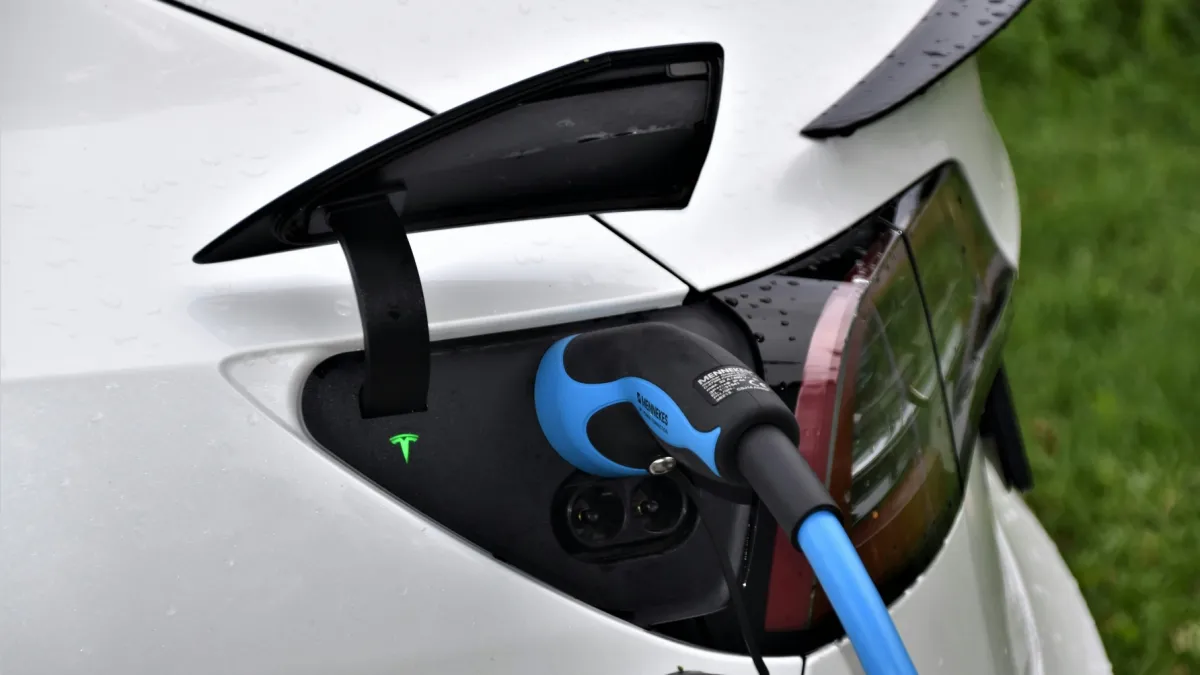
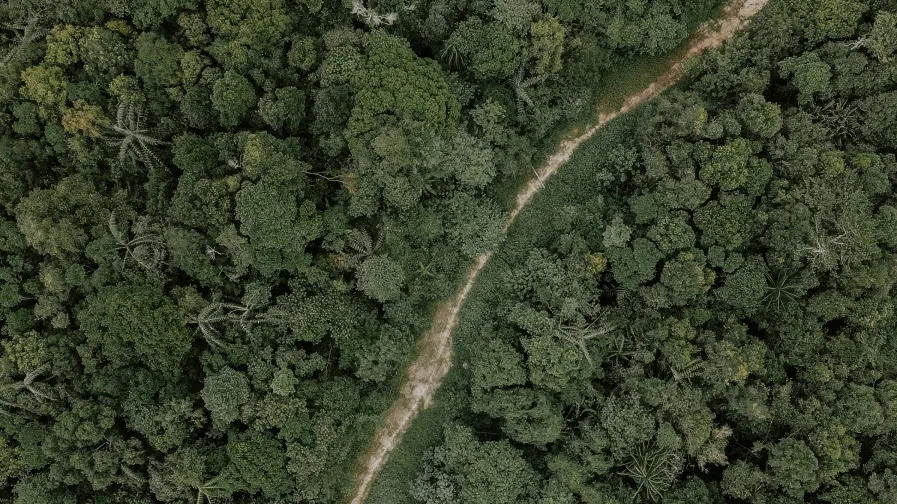


 Advertise
Advertise
